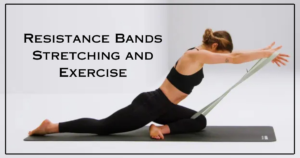Introduction
Exercise with fitness activities is the foundational element of a healthy lifestyle. When you engage in frequent physical activities, your physical wellness and The rapidly improving pace of our modern world frequently feature sedentary behavior, so fitness is essential in supporting disease prevention and active lifestyles. The upcoming content discusses exercise advantages, many fitness activities, and motivational techniques that lead to sustainable health objectives.
Importance of exercise to fitness:
People who work out regularly gain many advantages to their overall wellness development. Some of the key reasons to focus on fitness include:
1. Improves Cardiovascular Health
By strengthening the heart through exercise and promoting better circulation, people lower their risk of heart disease and stroke while controlling their blood pressure.
2. Aids in Weight Management
Because physical activity enhances calorie usage and strengthens metabolic functions, it is easier to maintain weight and achieve healthy weight loss.
3. Enhances Mental Health
Working out causes the brain to release endorphins, which people call “feel-good” hormones that protect against stress dep, depression, and anxiety.
4. Strengthens Muscles and Bones
Activities that involve bearing weight help people develop stronger muscles while increasing bone density, which creates excellent body resistance to osteoporosis and fractures.
5. Boosts Immune Function
Physical activity strengthens the immune defence system, making our bodies fight infections better.
Types of Exercise for Optimal Fitness:
A successful fitness program needs a mix of different exercise types to reach its full benefits. Here are the primary categories:

1. Cardiovascular Exercises
Heart health and tissue endurance improve through regular exercise practice. Examples include:
Running or jogging
Cycling
Swimming
Jump rope
High-intensity interval training (HIIT)
2. Strength Training
Strength training must be critical to voice our overall health while governing metabolic processes. Some practical strength training exercises include:
Weightlifting
Bodyweight exercises (push-ups, squats, lunges)
Resistance band workouts
3. Flexibility and Mobility Exercises
Properly integrating bending forces increases motion safety and improves flexibility capabilities. Some common flexibility exercises are:
Yoga
Stretching routines
Pilates
4. Balance and Coordination Training
Exercising for stability pulls your control muscles into better functioning, decreasing the likelihood of injury and protecting you from accidents. Examples include:
Tai Chi
Balance board exercises
Core strengthening workouts
Creating an Effective Fitness Routine
Create an effective exercise plan:
1. Set Realistic Goals
Set fitness goals you can track with weight loss progress and increased endurance and muscle-building charts.
2. Find an Exercise You Enjoy
The success of your fitness journey depends on you choosing activities for workouts that bring you true happiness. Setting fitness targets enables people to stay motivated consistently throughout enjoyable workout exercises.
3. Schedule Workouts
Consistency is key. Schedule time throughout your days for fitness exercises while abiding by your created workout routine.
4. Warm-Up and Cooldown
Exercises that build up muscles pre-workout coupled with proper cooling exercises help lessen muscle pain while guarding your body against injuries.
5. Track Your Progress
Your fitness results will improve while your fitness dedication intensifies through tracking methods that combine fitness journals with the smart use of tracking applications.
Nutrition and Hydration for Fitness Success
Diet performs the same essential duty for achieving fitness goals as physical exercises. Here are some key dietary considerations:
1. Eat a Balanced Diet
Daily food consumption requires the inclusion of proteins with carbohydrates and healthy fats together with vitamins and minerals.
2. Stay Hydrated
Hydration demands that you consume sufficient water before exercising, during workouts, and afterwards.
3. Pre- and Post-Workout Nutrition
Pre-Workout: Your fitness results improve when you eat complex carbohydrates and proteins for lasting energy.
Post-Workout: Consume protein alongside healthy carbohydrates in your meals to restore lost nutrients.
Common Fitness Myths Debunked:
People hold various wrong beliefs regarding exercise and fitness. Let’s clarify some of the common myths:
1. Myth: You Need to Work Out for Hours to See Results
Fact: The results from exercise become equivalent to those achieved through longer workouts when you maintain a consistent training schedule.
2. Myth: Lifting Weights Makes Women Bulky
Fact: Strength training can help people develop toned muscles and a better metabolism, although enormous muscle bulk rarely occurs.
3. Myth: Health experts agree that cardio exercise produces maximum success when you want to lose weight.
Fact: Successful weight management requires three elements, which include physical exercise combined with strength training and adequate nutrition.
4. Myth: You Should Work Out Every Day
Fact: Muscle growth and injury prevention both require rest days.

Overcoming Common Exercise Challenges:
A significant number of people experience barriers which prevent them from sticking to their fitness programs. Here’s how to overcome them:
1. Lack of Motivation
Work out with a partner because their presence ensures you stay committed to exercise.
Consider becoming a part of a fitness community that teaches group classes.
2. Physical Injuries
Your physical state requires attention because you need to reduce excessive exercise activities.
Low-impact exercises provide the most beneficial workout approach for healing from medical injuries.
3. Plateauing Progress
Regular updates to your exercise routine determine the speed of your physical development.
Testing different exercises or thinking ahead to gradual workout intensity changes helps your fitness progress and avoid hitting a plateau.
Regular exercise participation combined with better physical health leads to your ultimate success. Achieving fitness success depends fundamentally on establishing regular commitment as your starting point.
Here are some tips to stay on track:
1. Set a Routine
Physical activity should be an ongoing practice across every portion of your daily actions.
2. Reward Yourself
Live in the moment to celebrate your achievements, as motivation will remain strong.
3. Mix It Up
Switching workout varieties helps you stay focused and prevents fitness boredom during exercise.
4. Get Professional Guidance
Working with trained fitness specialists will help you stay on track through their direction of expert workout routines.
Conclusion
Every human needs exercise for a complete life that delivers health and fulfilment. Your fitness goals and better health outcomes become achievable through continued physical activity, together with diet control and consistent workout commitment. Following a gradual approach to being active, regardless of your fitness experience, will unlock lasting health advantages. Take the first steps to build a healthier body as you progress toward fitness success.






